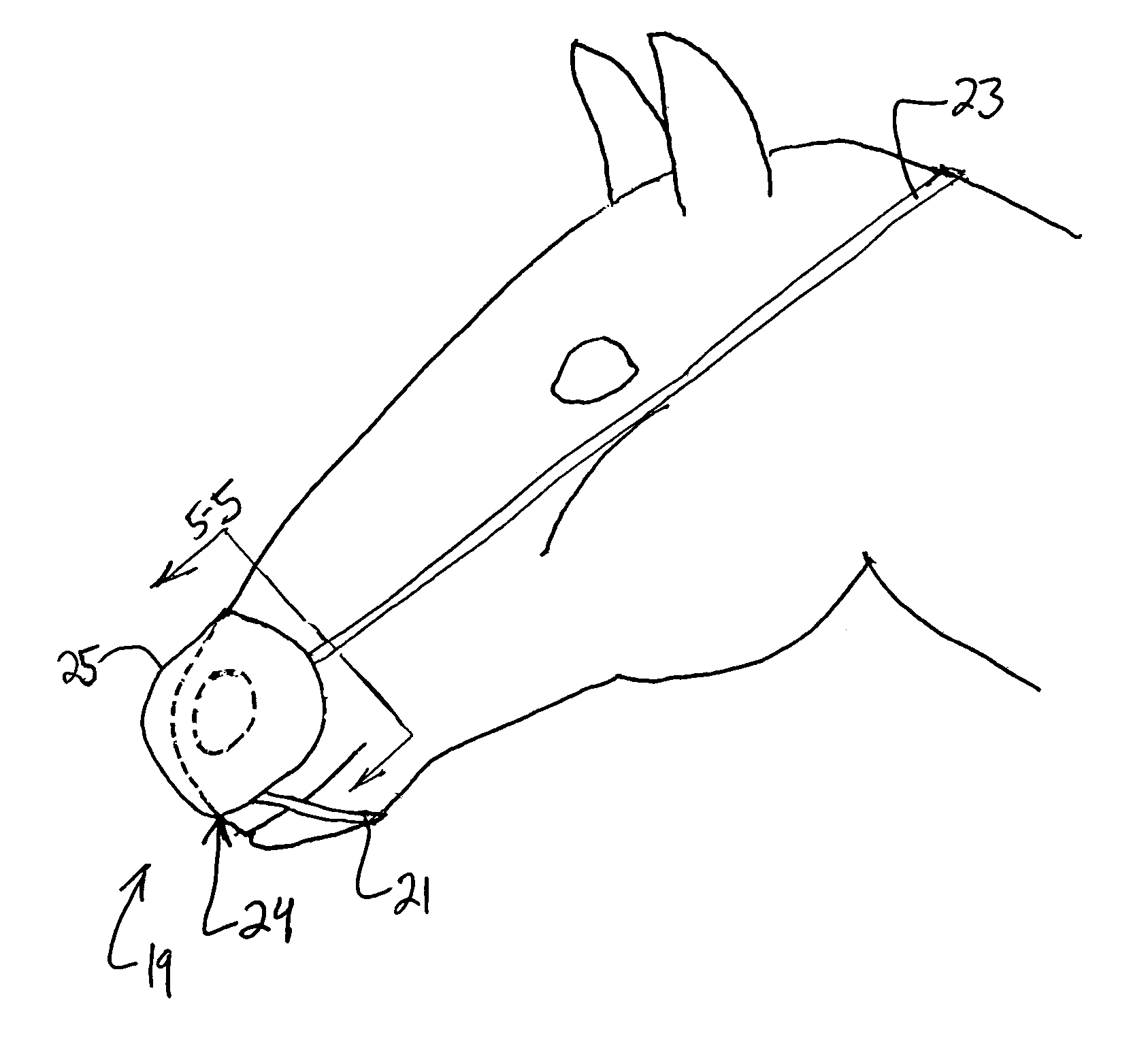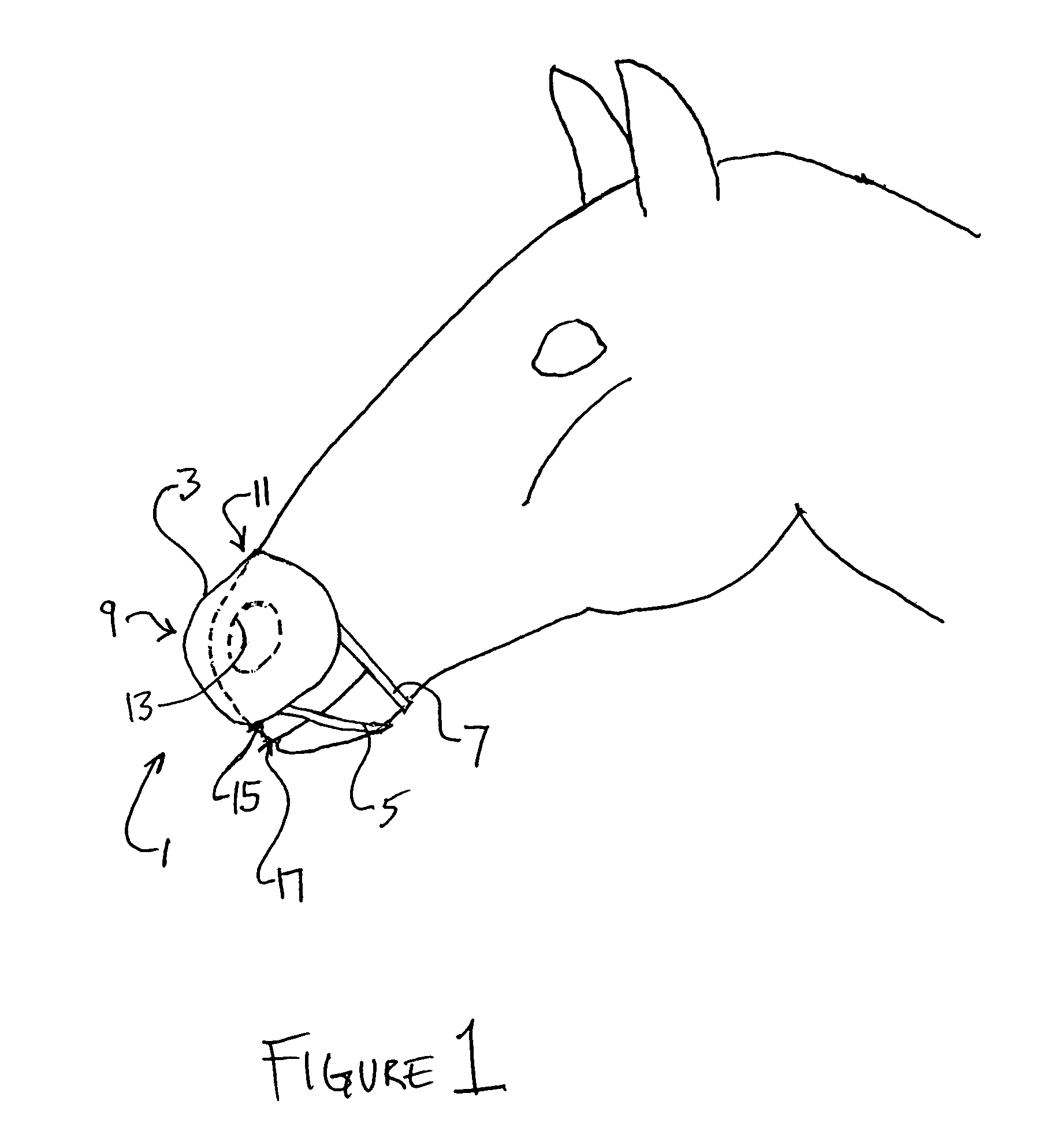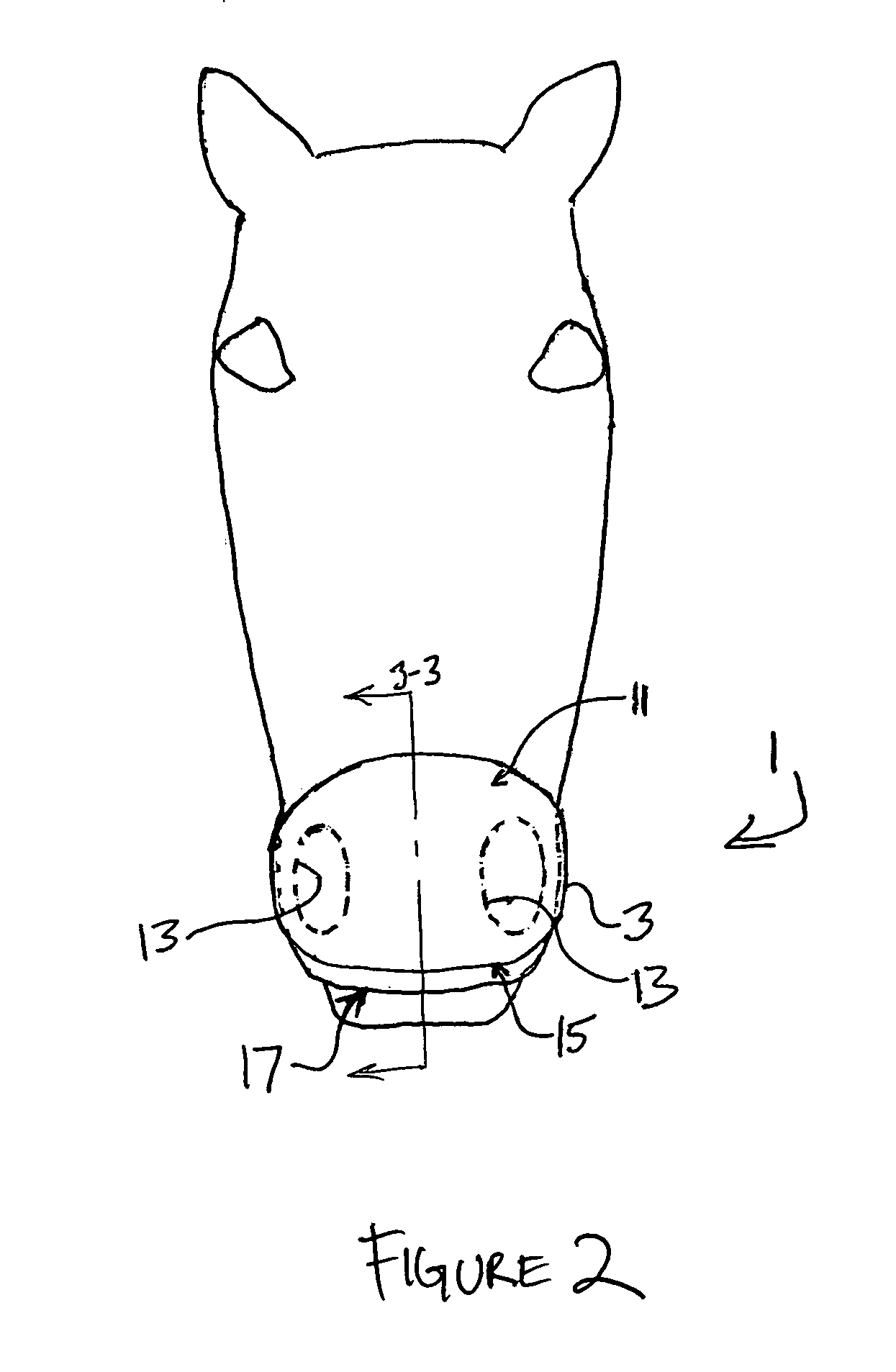Method and apparatus for filtering air entering an animal's nostrils
a filtering and nostril technology, applied in the field of air filtration, can solve the problems of allergic reactions or respiratory conditions known as “heaves", affecting the normal feeding of horses or other animals, and affecting the normal feeding of horses. , to achieve the effect of minimizing interference with normal feeding
- Summary
- Abstract
- Description
- Claims
- Application Information
AI Technical Summary
Benefits of technology
Problems solved by technology
Method used
Image
Examples
Embodiment Construction
[0019]FIGS. 1, 2 and 3 illustrate a preferred embodiment of a nose mask 1 for an animal. Though the nose mask may be used with other animals, an exemplary application is with respect to horses as shown.
[0020]The nose mask 1 of FIGS. 1, 2 and 3 has a flexible, air-permeable filter element 3, a first securing member 5, and a second securing member 7.
[0021]The filter element 3 has a central region 9 surrounded by a peripheral region 11 disposed along the edge of the filter element. The filter element 3 has a shape that allows the filter element to fit over a horse's nostrils 13 (indicated by dotted lines), and has a peripheral region 11 with a shape that generally corresponds to the contours of a horse's nose region, i.e., a region of the muzzle surrounding the nostrils 13. The filter element 3 preferably tends to retain the form in which it is manufactured, but is flexible to be shaped to substantially conform to the contours of a horse's nose region.
[0022]When operatively disposed on...
PUM
 Login to View More
Login to View More Abstract
Description
Claims
Application Information
 Login to View More
Login to View More - R&D
- Intellectual Property
- Life Sciences
- Materials
- Tech Scout
- Unparalleled Data Quality
- Higher Quality Content
- 60% Fewer Hallucinations
Browse by: Latest US Patents, China's latest patents, Technical Efficacy Thesaurus, Application Domain, Technology Topic, Popular Technical Reports.
© 2025 PatSnap. All rights reserved.Legal|Privacy policy|Modern Slavery Act Transparency Statement|Sitemap|About US| Contact US: help@patsnap.com



